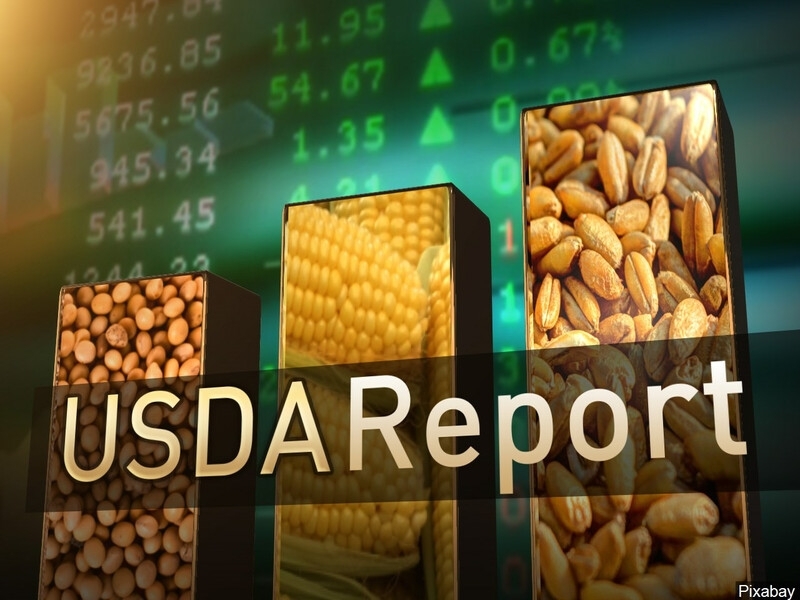The USDA lowered its forecast for oilseed production, as well as estimates of demand, trade and processing

In a March report, USDA experts again lowered their forecast for global oilseed production due to a decline in soybean yields in South America, as well as estimates of processing and consumption of oilseeds due to the war in Ukraine.
Compared to February estimates, the new oilseed balance as of my 2021/22, it has undergone the following changes::
- Forecast world-class production oilseeds were reduced by 10 million tons to 601.6 million tons (603.63 million tons in 2020/21 MG) due to a decrease in the soybean crop in Brazil, Argentina and Paraguay, which partially compensates for the increase in the rapeseed crop in Australia.
- Rating world exports reduced by 7 million tons to 181.3 million tons (191.3 million tons in my 2020/21) due to reduced supplies from Brazil, Argentina and Paraguay.
- Rating global imports reduced by 6.55 million tons to 178.83 million tons (189.78 million tons in 2020/21 MG).
- Forecast global processing reduced by 7.1 million tons to 514.01 million tons (508.17 million tons in 2020/21 MG).
- Rating global final reserves reduced only by 0.4 million tons to 104.34 million tons, which is 9 million tons lower than last year's figure due to a reduction in rapeseed and soybean reserves.
Soybean balance for my 2021/22, it has undergone major changes:
- Forecast initial inventory increased by 1.32 million tons to 101.74 million tons (96.8 million tons in 2020/21 MG).
- Rating production facilities reduced by 10 million tons to 353.8 million tons (366.23 million tons in 2020/21 mg and 339 million tons in 2019/20 MG), in particular for Brazil – by 7 million tons to 127 million tons (138 million tons in 2020/21 MG), Argentina – by 1.5 million tons to 43.5 million tons (46.2 million tons), Paraguay – by 1 million tons to 5.3 million tons (9.9 million tons), Uruguay – by 0.6 million tons to 2 million tons.
- Forecast consumption reduced by 5.49 million tons to 363.68 million tons (362.08 million tons in 2020/21 MG) due to reduced processing volumes in Brazil and Argentina and consumption in China.
- Rating export reduced by 6.4 million tons to 158.63 million tons (164.48 million tons in 2020/21 MG), in particular for Argentina – by 1 million tons to 2.55 million tons (5.19 million tons), Brazil – by 5 million tons to 85.5 million tons (81.65 million tons), Paraguay – by 0.6 million tons to 3.5 million tons (6.3 million tons).
- Rating import soybeans to China decreased by 3 million tons to 94 million tons (99.76 million tons in 2020/21 MG) due to a reduction in consumption by 2 million tons.
- Forecast final inventory decreased by 2.87 million tons to 89.96 million tons (101.74 million tons in 2020/21 MG) due to reduced reserves in Brazil, Argentina, Paraguay and the United States.
Forecast world rapeseed production in my 2021/22, it was increased by 0.56 million tons to 71.18 million tons (73.2 million tons in my 2020/21) due to a good harvest in Australia, where the Bureau of Economics and science of Agriculture and Natural Resources estimates that 6.4 million tons of oilseeds were harvested this year, which exceeds last year's record of 4.5 million tons.
Forecast world sunflower production they left at the level of 57.257 million tons (49.3 million tons in 2020/21 MG), but sharply reduced the estimate of sunflower oil exports.
After the Russian invasion, almost all oil processing plants and ports in Ukraine suspended their activities, and Western countries imposed sanctions that stopped exports from the aggressor country. The share of the Black Sea region in world exports of sunflower oil is 80%, but the share of sunflower oil in world consumption of food oils is only 12%, and in total consumption of vegetable oils (including biofuels and other types of industrial use) – 9%. In the World Trade in vegetable oils, the share of sunflower oil is 14%, as well as soy.


